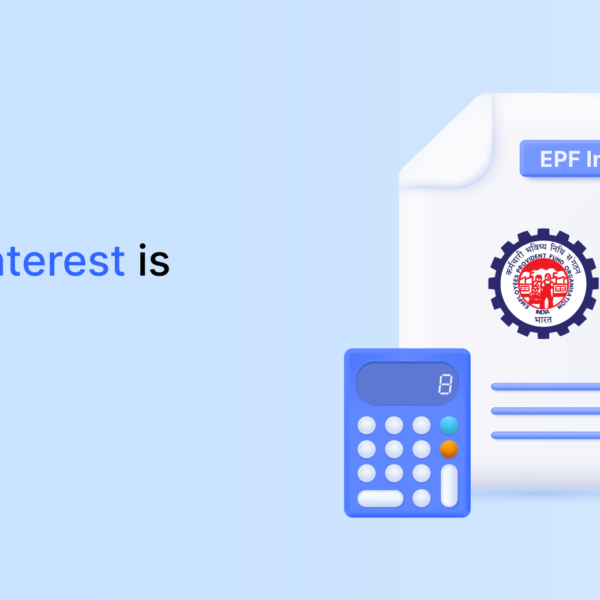Most people dive into their savings and liquidate their mutual fund investments in a financial crunch. However, there are other solutions for meeting financial needs.
Taking a loan against mutual funds can be a better option. This will preserve our mutual fund holdings, and the loan amount can be used to meet the immediate financial requirements.
How to pledge your mutual fund units?
An investor in a mutual fund scheme can take a loan against the existing units. To do so, you must pledge your mutual fund units as a security to the lending institution.
The application process involves marking a lien in favor of the lender. The investor cannot sell or redeem the units of a mutual fund scheme when the lien is marked.
The lender has the right to hold and sell the investor’s security if the borrowed money is not repaid according to the agreed-upon terms. It must be noted that marking a lien is on the units, not the loan amount.
The value of units can keep fluctuating. The pledged mutual fund units remain invested in the market, and investors will continue to earn returns on them. The units the investors will get via dividend reinvestment or split of units would remain under lien.
While writing to the fund house to pledge your mutual fund units, the investor has to state their name, the folio number, and the number of units for which a lien is to be placed.
This is followed by a verification letter from the lender. Once these steps are complete, a lien is placed. Financial institutions will have a list of mutual funds against which they are ready to offer loans.
How is a personal loan different from a loan against mutual funds?
A personal loan is unsecured, so we do not have to pledge collateral. On the other hand, taking a loan against mutual funds will require you to pledge your mutual fund units.
The interest rates of unsecured loans are higher than that of secured loans. We could save on the payment made in the form of interest rates by marking a lien on mutual fund units instead of taking a personal loan. The processing fees for loans against debt or equity mutual funds are minimal and sometimes even waived.
Additionally, if we don’t have a credit history, it may be a little difficult to get a personal loan, and sometimes, we may end up paying high-interest rates.
In the case of a loan against mutual funds, the lending institution is unlikely to ask for the credit history or may not be very stringent about credit score given that you will pledge your mutual fund units.
A personal loan has a fixed EMI, the principal plus interest, and customers must pay it monthly. For most loans against mutual funds, we have to ensure that the interest amount is covered every month and there is also some flexibility for repaying the principal amount during the tenure of the loan.
In terms of documentation, the requirement for a personal loan is lesser when compared with a loan against mutual funds. I
n the former, the lender will ask for identity, address, and income proof. The documentation is a lot more when you pledge your mutual fund units as it is based on the value of the units.
Some of the documents required include KYC documents (address and ID proof), bank statements, details of the pledged mutual fund units, and the most recent audited financial statements and Income Tax Returns.
What is the maximum loan amount that can be taken against mutual funds?
The maximum loan amount we can get will depend on the mutual fund scheme. ICICI Bank offers a loan amount of up to 80% of the NAV for debt mutual funds and up to 50% for equity mutual funds. State Bank of India provides a minimum loan amount of Rs. 25,000.
The maximum loan amount SBI offers is Rs 20,00,000 for equity mutual funds and Rs. 5,00,00,000 for debt mutual funds. The bank specifies the minimum and maximum loan amounts.
What is the process to repay loans against equity and debt mutual funds?
The borrower can repay the principal and interest together or just the interest alone, while the principal can be repaid at the end of the loan tenure.
The borrower may be required to make equated monthly installments or be given the option for uneven payments. The repayment can be made through the financer’s loan dashboard.
Once we have repaid the loan amount, the lending institution will request the mutual fund company or the registrar to remove the lien and process the loan closure.
If a partial loan has been repaid, that proportion of the units may be made free from the lien, given that it is acceptable to the lender, as specified in the contract. Here, partial units are freed, while the remaining would be under lien.
If the borrower defaults, the lien will be enforced, and the lending institution has the right to sell the pledged units and redeem the same with the mutual fund company. In addition to losing the fund units, this can also impact your credit score.
Is it a good option to take a loan against mutual fund holdings?
A loan against mutual funds can be a better alternative to a personal loan because of its lower interest rates. This route can be chosen to meet short-term financial requirements. As there is no need to sell the units, we do not have to go off track when moving toward our financial goals.
Please note that the loan amount and the interest rates will differ based on the kind of mutual fund scheme and from one lender to another.
It is therefore advised to visit the lender’s website for the terms and conditions associated with the loan amount.
Overall, there are many benefits to availing of a loan against equity or debt mutual funds. Our investments remain untouched in a financial emergency, ensuring we don’t compromise our financial goals.
We lose profits if we liquidate our equity mutual funds or debt mutual funds before they mature. If you are an investor and pledge your mutual fund units to raise a loan amount, you will continue to earn your share of profits and the dividend, depending on the kind of mutual fund scheme you have invested in. Sign up with Koshex.
FAQs
What is the process for applying for a loan against mutual funds?
The loan amount may be quickly sanctioned if we hold mutual fund units in a Demat form. The lender asks the mutual fund registrar to mark a lien on the pledged units. Once this is complete, the registrar sends a letter to the lender with a copy to the borrower confirming the lien.
What are the benefits of availing loan against mutual funds?
Our fund ownership remains intact when taking a loan against mutual funds, provided we repay the loan. The lending institution will keep the units as collateral until we repay the loan. We can continue to earn returns from the funds during this period. However, remember that the mutual funds cannot be sold while the loan amount is repaid since they have been pledged.









Leave a Comment